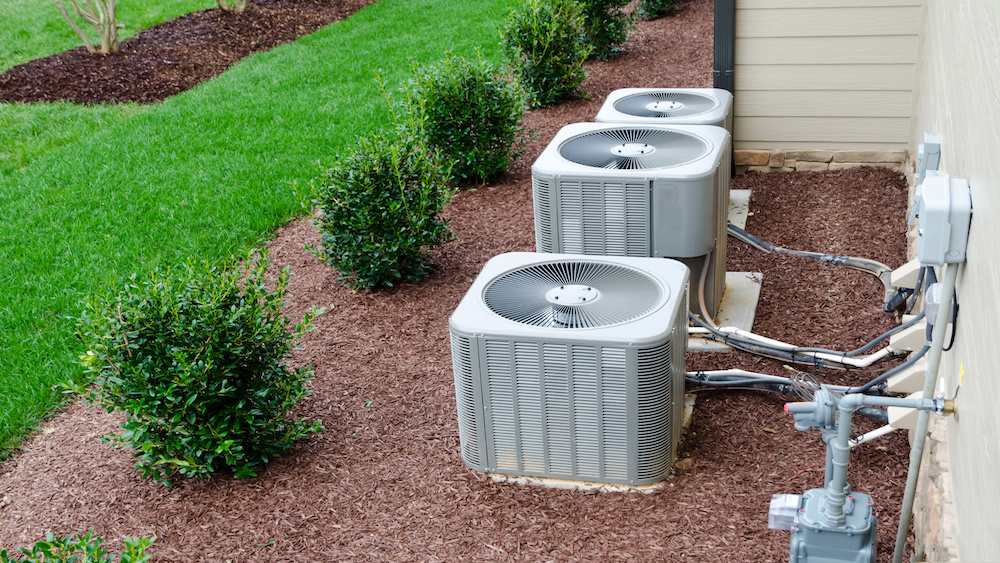Heating and air-conditioning units that are too large or small can raise your energy bill and cause other problems. Here’s a guide to help the average consumer purchase a system that’s just the right size.
Determining heating and air-conditioning unit sizes
Home air-conditioning units come in a variety of sizes. The size is expressed in tons — for example, a 2.5-ton unit — but the wording has nothing to do with weight. Instead, tonnage indicates the heating or cooling capacity of the unit.
An air conditioner with too much cooling capacity for your home will cycle on and off too frequently, running up a high electric bill. What’s more, these frequent cycles don’t run long enough to fully dehumidify the air. This will leave your home cool but clammy, which can breed mold and mildew on surfaces and may require you to install a home dehumidifier. Conversely, a unit that is too small will run continuously in order to try to cool your house, which also results in a higher electric bill.
Likewise, choosing a furnace that is over- or undersized can cause inefficient short cycling and waste energy.
In addition to having a unit the correct size, optimum heating, and cooling performance require properly sized ductwork and a blower set at the appropriate speed for distributing treated air. Issues with these two parts of your HVAC system can also lead to higher costs and mold and mildew.
Understanding it like the pros
Several factors affect the size of the units needed, so discuss your situation with a reputable HVAC specialist. But you can get a reasonable estimate of your heating and cooling needs yourself. An important factor affecting both heating and cooling capacities is the climate zone you reside in. Other factors include the age of the home, the quality of the insulation, the number, and type of windows and whether the home has more than one story.
To get an idea of the proper size for your HVAC units, first calculate the square footage to be treated by multiplying the length by the width of each room and then adding all room areas together.
For air-conditioning, multiply that number by 25, then divide by 12,000 BTUs (British Thermal Units). This calculation will provide the tonnage of cooling needed. Say your house has 2,500 square feet. Multiply 2,500 by 25, equaling 62,500. Dividing that number by 12,000 equals 5.2, which means you need a 5-ton unit to properly cool your house. If your home’s square footage requires a unit larger than 5 tons, you may need two air-conditioning units to handle different parts of the house.
Calculating the heating capacity your home needs requires knowing your climate zone. Depending on the climate zone and how well your home is insulated, multiply your home’s square footage by a factor between 30 and 60 to determine the number of BTUs you require. Choose a furnace with the capacity and energy-efficiency rating that will provide that amount of heating.
Because HVAC mistakes are costly, consult with a professional to ensure your HVAC is the right size. The goal for both heating and cooling is an HVAC system optimized for your home’s location, size, and age that provides both comfortable air and energy efficiency.
Related – Give Your Heating and Air Conditioning Systems a Little TLC


